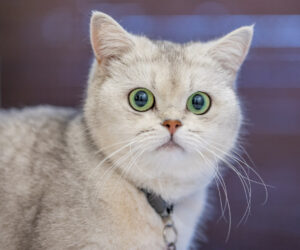Age Limits and Senior Cats
Fur parents exploring options for senior cat insurance should be particularly mindful of age limits imposed by insurance companies. As cats age, they become more susceptible to chronic conditions and serious illnesses, making them a higher risk for insurers. Therefore, some plans may offer more limited coverage or have higher premiums for older felines.
| Exclusion/Limitation Type | Description | Impact on Coverage |
|---|---|---|
| Pre-existing Conditions | Conditions present before the start of the policy | No coverage for related treatments or care |
| Genetic/Breed-Specific Disorders | Conditions common to specific breeds | Excluded from coverage in most plans |
| Age-Related Restrictions | Limitations applying to cats beyond a certain age | Reduced coverage options and higher premiums |
Being well-informed about the insurance exclusions for cats and understanding the scope of cat insurance limitations can help you make the best choices for protecting your feline companion’s health. Although navigating the fine print can be challenging, a clear understanding of these exclusions and limitations empowers cat owners to select the most appropriate insurance plan.
How to Customize your Cat’s Insurance Plan
As a cat parent, you’re well aware that each feline has its quirks and unique needs. This extends to their health care as well, which is why custom cat insurance has become an essential tool for many. Leading providers, such as ASPCA Pet Health Insurance, offer a bevy of options that cater to those needs, allowing you to create personalized cat insurance plans that fit both your budget and your cat’s specific health requirements.
Selecting the right cat health insurance customization options can be overwhelming. But it’s necessary to consider your cat’s life stage, breed-related health risks, and your personal financial boundaries. Here’s a useful guideline on how to tailor your furry friend’s insurance plan:
- Start by assessing your cat’s risk factors—age, breed, and existing health conditions—these will heavily influence the type of coverage you’ll need.
- Determine your financial comfort zone regarding premiums, deductibles, and caps. This will help in striking a balance between comprehensive coverage and affordable pricing.
- Consider adding additional options like wellness coverage for routine check-ups and preventive care to maintain your cat’s health proactively.
- Look at the flexibilities offered, such as adjustable reimbursement rates and the ease of modifying your policy.
Pets Best is another advocate for the adaptability of cat insurance. They understand that a one-size-fits-all approach doesn’t apply to pet health care. Providing you with the ability to choose among various coverage options ensures that you are only paying for what your cat may actually require. This could include selecting specific protections against chronic diseases known to affect your cat’s breed, integrating a wellness plan, or opting for a comprehensive accident and illness plan.
Remember, the goal is to design a plan that provides peace of mind, knowing that you’ve got a safety net tailored to your cat’s unique life story. Customization ensures you’re not overinsured with superfluous options nor underinsured when an unexpected health issue arises.
It’s worth taking the time to speak with insurance providers directly about the extent of customization they offer. They can provide insights and guidance on crafting a policy that matches your expectations, thereby giving you and your cat the personalized care and protection you deserve.




